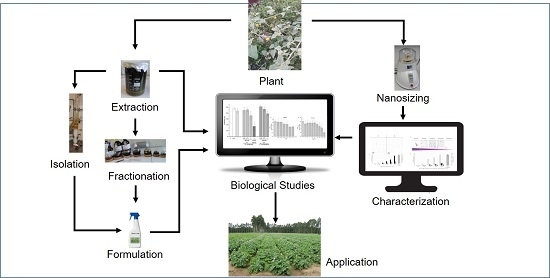Turning Waste into Value: Nanosized Natural Plant Materials of Solanum incanum L. and Pterocarpus erinaceus Poir with Promising Antimicrobial Activities
Abstract
Share and Cite
Griffin, S.; Tittikpina, N.K.; Al-marby, A.; Alkhayer, R.; Denezhkin, P.; Witek, K.; Gbogbo, K.A.; Batawila, K.; Duval, R.E.; Nasim, M.J.; et al. Turning Waste into Value: Nanosized Natural Plant Materials of Solanum incanum L. and Pterocarpus erinaceus Poir with Promising Antimicrobial Activities. Pharmaceutics 2016, 8, 11. https://doi.org/10.3390/pharmaceutics8020011
Griffin S, Tittikpina NK, Al-marby A, Alkhayer R, Denezhkin P, Witek K, Gbogbo KA, Batawila K, Duval RE, Nasim MJ, et al. Turning Waste into Value: Nanosized Natural Plant Materials of Solanum incanum L. and Pterocarpus erinaceus Poir with Promising Antimicrobial Activities. Pharmaceutics. 2016; 8(2):11. https://doi.org/10.3390/pharmaceutics8020011
Chicago/Turabian StyleGriffin, Sharoon, Nassifatou Koko Tittikpina, Adel Al-marby, Reem Alkhayer, Polina Denezhkin, Karolina Witek, Koffi Apeti Gbogbo, Komlan Batawila, Raphaël Emmanuel Duval, Muhammad Jawad Nasim, and et al. 2016. "Turning Waste into Value: Nanosized Natural Plant Materials of Solanum incanum L. and Pterocarpus erinaceus Poir with Promising Antimicrobial Activities" Pharmaceutics 8, no. 2: 11. https://doi.org/10.3390/pharmaceutics8020011
APA StyleGriffin, S., Tittikpina, N. K., Al-marby, A., Alkhayer, R., Denezhkin, P., Witek, K., Gbogbo, K. A., Batawila, K., Duval, R. E., Nasim, M. J., Awadh-Ali, N. A., Kirsch, G., Chaimbault, P., Schäfer, K.-H., Keck, C. M., Handzlik, J., & Jacob, C. (2016). Turning Waste into Value: Nanosized Natural Plant Materials of Solanum incanum L. and Pterocarpus erinaceus Poir with Promising Antimicrobial Activities. Pharmaceutics, 8(2), 11. https://doi.org/10.3390/pharmaceutics8020011











